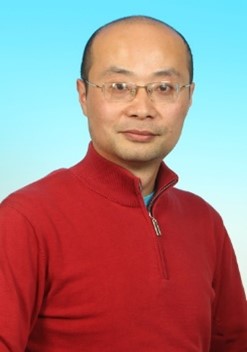Mingxiang Wang
TFTs for Display
Soochow University, 215000, Suzhou, China,
Email: Mingxiang_wang@suda.edu.cn
Biography
Mingxiang Wang received B.S. in physics and Ph.D. in condensed matter physics from Nanjing University, China, in 1993 and 1998, respectively. From 1998 to 2001, he was a Postdoctoral Research Associate with the Department of Electrical and Electronic Engineering, the Hong Kong University of Science and Technology. Then he joined the Semiconductor Manufacturing International Corporation (Shanghai), China, as a Member of Technical Staff in process reliability engineering. From 2003 to present, he was a professor with the School of Electronic and Information Engineering, Soochow University, China. He is a senior member of IEEE since 2009. His research interests include thin-film materials and devices, semiconductor device physics, device modeling and reliability. He published more than 100 papers in international journals and conferences, and held 6 inventions. He served as Co-chair or Technical Chair in a few IEEE conferences such as IPFA 2016 and ICICDT 2019, gave invited talks or tutorial lectures in international conferences for >20 times, and won the Best Paper Award in conferences ICSICT 2008, IEEE IPFA 2010, ICSICT 2016, and IEEE CAD-TFT 2018.
Abstract for Presentation
Dominant Role of Air Ambient in Dynamic Bending Degradation of Flexible LTPS TFTs
Thin film transistors (TFTs) are key components of flexible electronics. Degradation of flexible low-temperature poly-Si (LTPS) TFTs under dynamic bending is a critical issue, which was generally attributed to bending stress induced generation of interface states in TFTs [1-2]. However, the active layer of flexible TFTs is usually located in the neutral plane of the whole structure, where nearly zero stress cannot induce any interface states directly [3]. A reasonable explanation is still absent. For flexible LTPS TFTs under dynamic bending stress, normally degradation occurs along with the bending cycles. Besides, for TFTs stored in air ambient after stress removal, an abnormal spontaneous degradation was reported [4]. By comparing the spontaneous degradation of TFTs in different kinds of controlled ambients, such as Ar, N2, O2 and H2O, it is determined that the interaction between the active area of TFTs and O2 in the air ambient causes the degradation, while H2O vapor can suppress it. Furthermore, a dynamic bending test on LTPS TFTs was conducted in controlled ambient [5]. The degradation is found to strongly depend on the ratio of O2/H2O, demonstrating that the synergistic effect of H2O and O2 is the origin of both normal degradation and spontaneous degradation. For flexible TFTs under dynamic bending stress, penetrating micro-/nano- cracks through the passivation into the active region of TFTs were induced, so that O2 and H2O in the air can diffuse to transport electrons into TFTs. Some electrons were captured within the gate insulator, resulting in the observed degradation. Note that for spontaneous degradation, a small amount of H2O vapor can diffuse into TFTs during the stress test from the air. Thus, the synergistic effect of O2 and H2O vapor dominates the degradation behavior of the flexible LTPS TFTs under dynamic bending stress.
References
[1] B. W. Chen*, T. C. Chang, Y. J. Hung, T. Y. Hsieh, et al., Appl. Phys. Lett., 106 (2015), 183503.
[2] M. M. Billah, M. M. Hasan, J. Jang*, IEEE Electron Device Lett., 38 (2017).
[3] W. Jiang, Q. Shan, H. Wang, M. Wang*. 9th Int. Conf. CAD-TFT, (2018).
[4] W. Jiang, B. Li, , X. Li, M. Wang*, H. Wang, D. Zhang. IEEE Electron Device Lett., 41 (2020).
[5] M. Du, B. Li, W. Zhou, M. Wang*, D. Zhang. IEEE Electron Device Lett., 42 (2021).
WELCOME TO CHINA TO ATTEND THE ICANS
23-26 August, Nanjing, China
Connect with us:



